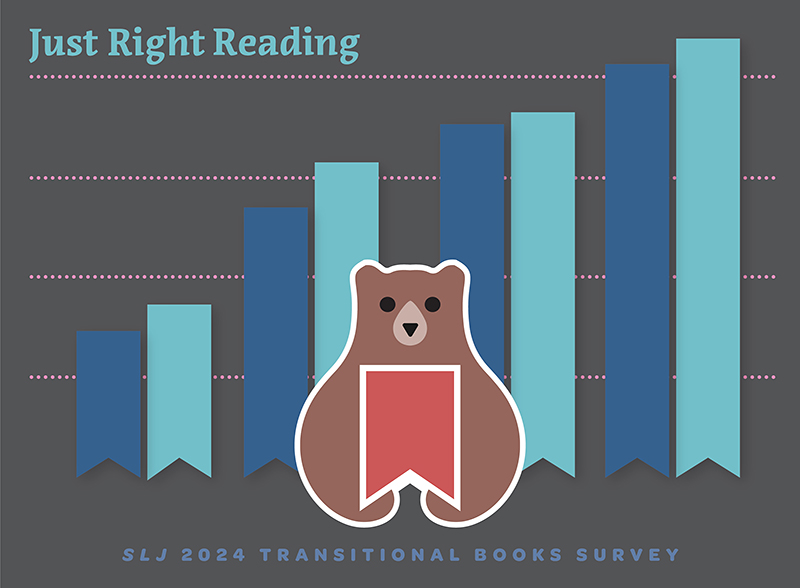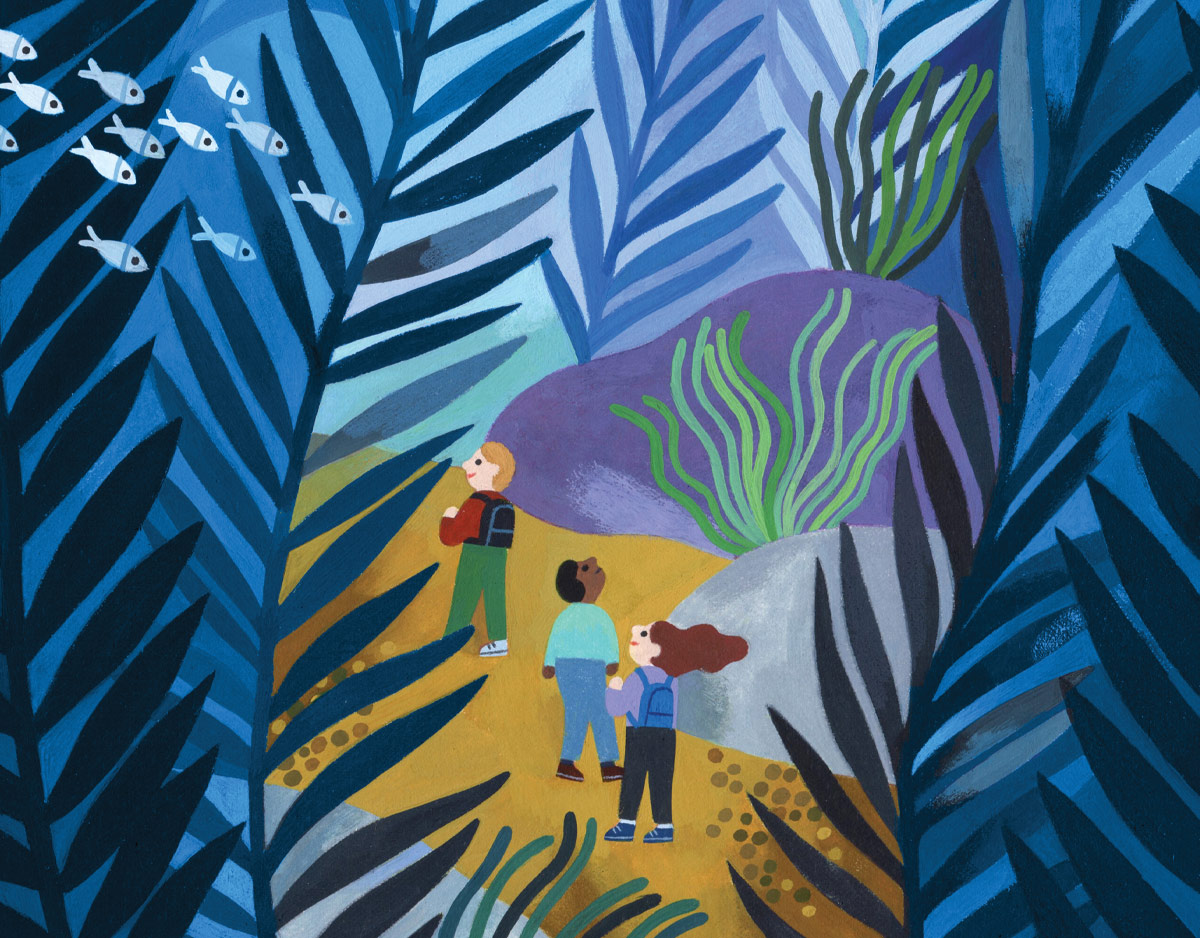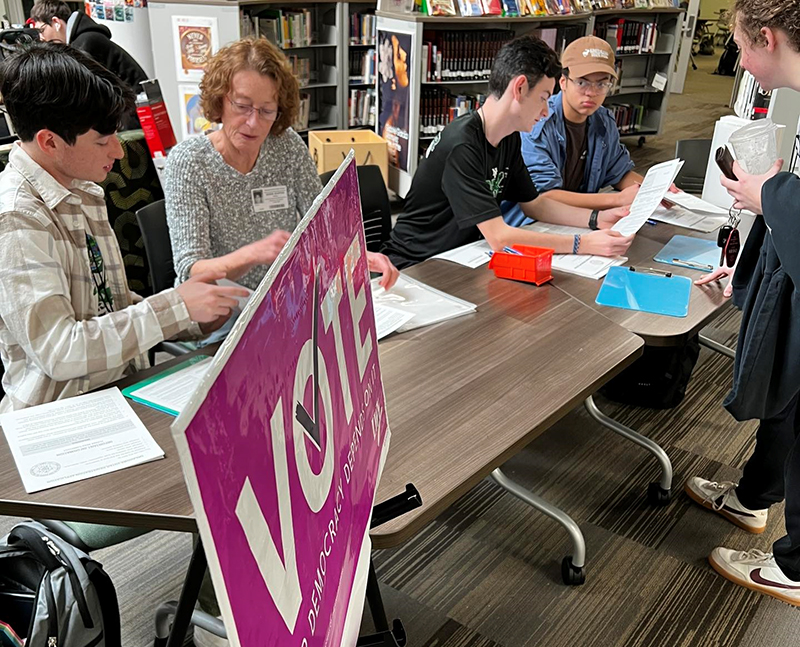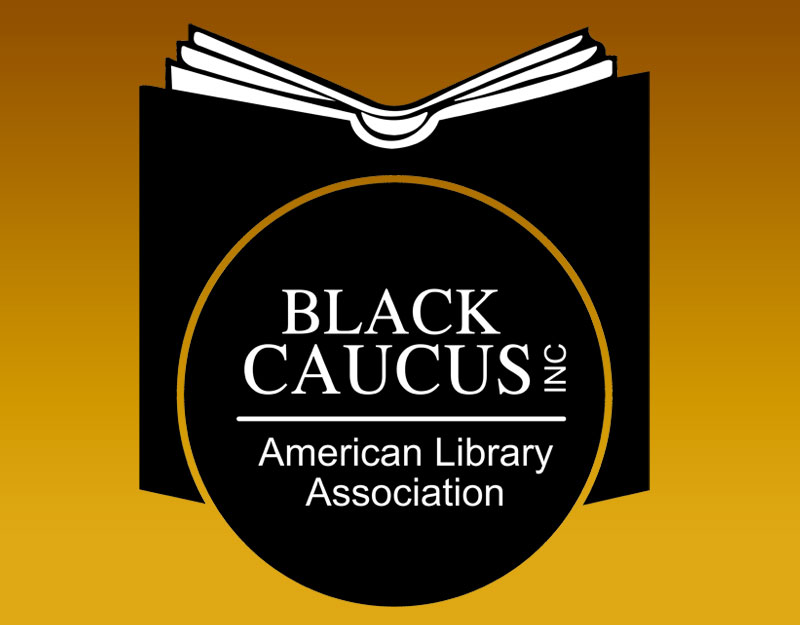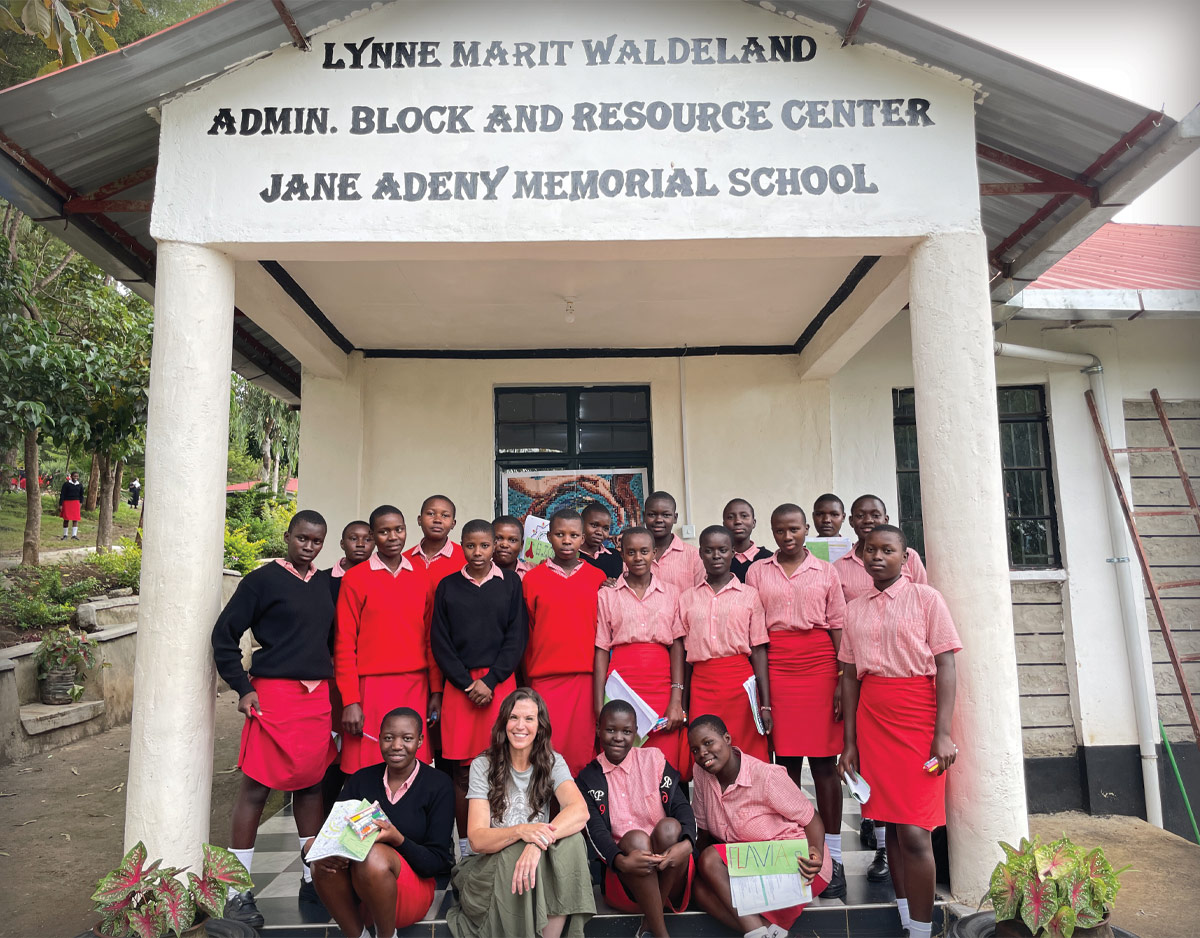Amari and the Night Brothers Celebrates #BlackGirlMagic

Amari and the Night Brothers
Written by B.B. Alston
Published by Balzer + Bray, 2021
ISBN 978-0-06-297516-4
Grades 4-8
Book Review
Imagine the joy of discovering you have magical abilities…now, imagine if those abilities were then deemed “illegal” by the community of supernatural creatures you thought were becoming your friends. Thirteen-year-old Amari Peters is on a quest to find her missing brother, Quinton, who went mysteriously missing months ago. When she finds a ticking briefcase in his closet, she is invited to a tryout at the Bureau of Supernatural Affairs, a magic society dedicated to keeping magical beings hidden and the last place Quinton was seen before his disappearance. In a badging ceremony reminiscent of Harry Potter’s sorting hat, Amari discovers she is a magician with powers that threaten the members of the Bureau and her place in it. Amari is the kind of fierce, fearless, female character we need on our classroom bookshelves and in middle grade readers’ hands. Amari’s experiences as a young Black girl are poignantly portrayed both in the world we live in and in the hidden world of the Bureau. Debut author B.B. Alston has crafted a novel that draws on the familiar and comforting elements of fantasy but that challenges readers to bear witness to injustice and hatred that stems from racism. The first in an upcoming trilogy, Amari and the Night Brothers is a thrilling, fast-paced read that tackles issues of loss, belonging, and race in ways that will inspire readers to confront prejudice and interrogate privilege.
Teaching Ideas: Invitations for Your Classroom
Note to our Readers: These ideas are not meant to be prescriptive. Choose one. Choose more. It’s up to you. Some ideas are bigger and will take a number of days to complete. Some are shorter. You can also choose to complete one part of a teaching idea, but not the whole thing. It’s up to you!
ADVERTISEMENT
ADVERTISEMENT
Weredragons, Magicians, Rhino Hybrids–Oh My: Fantasy as a Genre. Fantasy books vary in the ways they tell a story that departs from our everyday reality. A simple definition of fantasy is any story in which at least one element cannot be found in our human world. Support students to notice and name the elements that make Amari and the Night Brothers a fantasy novel by having students work in partnerships or small groups to create story element charts or infographics. Some of the elements of fantasy found in Amari and the Night Brothers include: magical powers, fantastical beasts, an imagined world, traveling through time and space, and fantastical objects like talking elevators. After identifying elements of fantasy in the book, invite students to use Amari and the Night Brothers as a mentor text for their own fantasy stories that incorporate the elements of fantasy that B.B. Alston uses. There has been an increase in fantasy titles featuring cultural diversity and diverse life experiences. See the titles listed in Further Explorations below for other fantasy titles to add to your classroom library.
Heroism in Amari’s Worlds. Support students to define what makes someone a hero. Then, have students consider the ways in which various characters represent heroism through the story. For example, we learn at the beginning of the story that Amari’s brother, Quinton, is a hero to people in the real life of their neighborhood and in the imagined world of the Bureau of Supernatural Affairs. What were Quinton’s qualities that made him so heroic? Who helps Amari realize that she is a hero, too? In what ways is her heroism apparent both in our world and in the supernatural world of the Bureau? How does it look different in each? Who are the friends that stand by and up for Amari, particularly in the face of peer pressure and hatred stemming from racism and classism? Extend this conversation to support students to consider everyday acts of heroism that they might demonstrate, for example, when they feel nervous but do something anyway, when they stand up for others, or when they try something for the first time.
What If: Create Your Own Illusion. Central to creating any work of fiction is asking the question “what if?” Invite students to imagine some of the “what ifs” that might have been on author B.B. Alston’s mind when he sat down to write Amari and the Night Brothers. Then, invite students to zoom in on the scene where Amari creates her first illusion. What if they had Amari’s magical ability to create illusions? What would they want to create? Have students write descriptions of what they would create and then invite them to use a variety of art materials to create a visual image of their illusion.
Design Your Own Badge. The badging ceremony is an exciting entry point for Amari as a trainee in the Bureau of Supernatural Affairs. The badges that trainees are awarded range from badges made from simple materials like paper to the illustrious moonstone badge Amari receives. The more rare the material, the higher level the badge. Invite students to examine federal and state badge designs from U.S Bureaus such as the FBI and Bureau of Land Management. Invite students to design their own badge either with traditional art materials or using digital technologies. Have students share their badges with one another in a mock badging ceremony that supports students to embody the excitement Amari and the other trainees would have experienced for this event.
Fantastical Setting: Close Reading and Creating. The Bureau of Supernatural Affairs can’t be looked up on Google Earth but there are many descriptions in the text of the various floors that compose the Bureau. Invite students to engage in close reading and rereading of how B.B. Alston describes the setting of the Bureau. In partnerships, have students create architectural floor plans, maps, or models of the Bureau with detailed labels for the various elements of the setting. Have students share their drawings with one another noting similarities and differences that encourage returning to the text for details.
Overcoming Self Doubt. Amari is incredibly determined and courageous, but like all of us, she faces self-doubt and sometimes engages in defeatist “compare despair” thinking. Support students to notice these moments in the text. What are the strategies Amari uses to overcome self-doubt and compare-despair thinking? What are the ways her friends help support her to see the good in herself? Use Amari’s experiences as an invitation for students to journal about moments of challenge in their own lives and how they might draw from Amari’s example to overcome self-doubt in the future.
ADVERTISEMENT
ADVERTISEMENT
Nominating Others to Greatness. Quinton brought Amari into the world of the Bureau of Supernatural Affairs through his magical briefcase nomination. At the end of the novel, we are left with the cliffhanger of Amari nominating her friend, Jayden. Invite students to discuss nominations and to consider ways they can metaphorically “nominate” others in life to greatness. In what ways can they lift up the greatness and brilliance of others through acts of inclusion, affirmations, and friendship? Consider creating a class routine that encourages students to nominate one another for acts of generosity, compassion, and collaboration.
Secret Agent Training for Kids. Reading Amari and the Night Brothers may inspire the inner secret agent in your students. Deemed “Artemis Fowl meets Men in Black” by the publisher, HarperCollins, Amari and the Night Brothers includes the mystery and mystique of secret agent training in a fantastical, hidden world. Have students identify the kinds of secret agent training Amari and the other trainees are challenged with and compare that to secret agent training in the known world. Visit the International Spy Museum’s lesson plans and activities to create engaging extensions for students including cracking a secret code and mind memory activities.
Critical Literacy
Power, Privilege, Positioning, and Potential. Throughout the novel, Amari is confronted by racism and classism from her peers whether in the known or magical world. Even Quinton’s disappearance is attributed by the police to neighborhood violence and getting mixed up with the wrong people. Support students to identify and discuss these moments from the text. Then, support students to identify the ways power and positioning support some characters to have fewer risks and more privilege over others in both worlds such as in the case of legacy kids at the Bureau. In what ways does one’s potential seem to hinge on societal forces outside of one’s control? Support students in a conversation about how this plays out in the novel as well as in their own lives. Consider pairing Amari and the Night Brothers with the realistic fiction middle grade novel What Lane? by Torrey Maldonado for a deeper investigation into how power, privilege, positioning, and potential are represented in each book.
Interrogating a Lack of Diversity in Fantasy Books. Read with students B.B. Alston’s author’s note about how he originally sat down to write a fantasy novel with characters that didn’t look like him. What were his reasons for doing that? What changed his mind to create a fantasy novel with a Black girl protagonist? Amari and the Night Brothers is helping diversify the genre of fantasy books but there is much more that needs to be done in diversity in children’s and YA literature and in the media. Share with students the infographic by Lee and Low Books on Diversity in Hollywood Sci-Fi and Fantasy Blockbusters. Invite students to take stock of the fantasy collections in the classroom library, school library, or local public library. Have students create their own diversity gap studies to create an infographic on fantasy books with diverse representations using Lee and Low’s infographic as a mentor text. Support students to grow their access to fantasy books with diverse representations of characters by writing letters to the principal, school board, or local newspaper. There has been an increase in fantasy titles featuring cultural diversity and diverse life experiences in the past few years thanks to the work of many authors, illustrators, and publishers. See the titles listed in Further Explorations below for other fantasy titles to add to your classroom library as well as imprints such as Tu Books by Lee and Low and Rick Riordan Presents by Disney-Hyperion.
Further Explorations
Digital Resources
Reading of Amari and the Night Brothers by B.B. Alston
HarperCollins Teaching Guide
Book Riot: 10 Middle Grade Fantasy Novels with Black Girl Leads
Middle Grade Fantasy Novels with Black Girl Leads
https://kcls.bibliocommons.com/list/share/231130168/779928207
Tu Books
https://www.leeandlow.com/imprints/tu-books
Rick Riordan Presents
NCTE: Teaching Black Children Cultural Identity Through Magic, Folklore, and Myth
https://ncte.org/blog/2020/12/teaching-black-children-cultural-identity-magic-folklore-myth/
International Spy Museum Activities:
International Spy Museum: Code-Making and Code-Breaking Video
Fantasy Books with Characters of Color
Armendáriz, L.D. (2020). Julieta and the diamond enigma. New York, NY: Lee and Low Books.
Baptiste, T. (2015). The jumbies. Chapel Hill, NC: Algonquin Young Readers.
Chokshi, R. (2018). Aru Shah and the end of time. New York, NY: Rick Riordan Presents.
Durham, D. (2021). The shadow prince. New York, NY: Lee and Low Books.
Okorafor, N. (2005). Zahrah the windseeker. Boston, MA: HMH Books for Young Readers.
Magoon, K. (2016). Shadows of Sherwood. New York, NY: Bloomsbury.
Rhodes, J.P. (2013). Bayou magic. New York, NY: Little, Brown Books.
Whitley, J. (2012). Princeless: Save yourself. Action Lab Comics.
About Katie Cunningham
Katie is a Professor of Literacy and English Education at Manhattanville College. There she is also the Director of the Advanced Certificate Program in Social and Emotional Learning and Whole Child Education. Her work focuses on children’s literature, joyful literacy methods, and literacy leadership. Katie is the author of Story: Still the Heart of Literacy Learning and co-author of Literacy Leadership in Changing Schools. Her book Start with Joy: Designing Literacy Learning for Student Happiness will be released September 2019. She is passionate about the power of stories to transform lives.
ADVERTISEMENT
ADVERTISEMENT
SLJ Blog Network
One Star Review, Guess Who? (#211)
Cover Reveal and Q&A: Dusti Bowling’s Latest – The Beat I Drum (Apr 2025)
Kevin McCloskey on ‘Lefty’ | Review and Drawn Response
Notable NON-Newbery Winners: Waiting for Gold?
The Seven Bills That Will Safeguard the Future of School Librarianship
Take Five: Newbery Picks, Part Two
Gayle Forman Visits The Yarn!
ADVERTISEMENT



